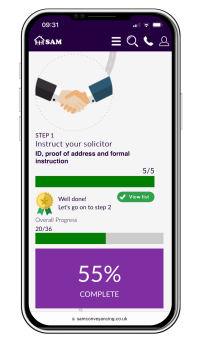What is the draft contract pack?
- Seller's formal instruction to their solicitor;
- Seller's completed protocol forms;
- Estate Agent's Memorandum of Sale; and
- EPC.
Once all of the above are received, the seller's solicitor sends the contract pack to the buyer's solicitor. Some solicitors who don't have the completed protocol forms back from their client will issue partial contracts to the buyer's solicitor and will forward the protocol forms once received.
How quickly are draft contracts issued by the seller's solicitor?
The speed at which draft contracts are issued is reliant upon the seller, and the sooner they provide their complete protocol forms, the sooner the full contract pack can be issued. As a rule, this takes around 1 to 2 weeks, but can sometimes take much longer - which will slow down how quickly the transaction can get to Exchange of Contracts.If there is a delay in the buyer's solicitor receiving draft contracts (longer than 1 to 2 weeks after the sales memo has been released), this can often be related to the time it takes the seller to:
- complete the legal property information forms, and
- putting together the supporting documents.
It could also be that the seller's solicitor is very busy and is delayed in preparing the draft contract. The best advice is to ask the estate agent to chase the seller and their solicitor to find out when the draft contracts are going to be sent - until the buyer's solicitor receives these documents, they cannot raise formal legal enquiries.
What is included in the draft contract pack?
- 1
Unlike many contracts, a property contract isn't binding until exchange of contracts, so if you sign it, it doesn't mean you are legally bound to buy the property (although you can pull out after exchange and bear the costs).
After the draft contracts have been received and the title check is completed, you'll be sent the contract for signing, and you'll note that there is often a lot of handmade amendments to the contract. This is normal, as this will have been changes the seller's and buyer's solicitors have mutually agreed - even changing the spelling of names on the contract!
- 2
There are 2 property information forms that the seller is expected to complete for the buyer (3 if the property is leasehold):
- TA6 Property Information Form - The seller lists information regarding the following categories: Boundaries, disputes and complaints (with neighbours), notices and proposals, alterations, planning and building control, guarantees and warranties, insurance, environmental matters, rights and informal arrangements, parking, other charges, occupiers, services, connections to utilities and services and transaction information. (Read more about the TA6 Property Information Form)
- TA10 Fittings & Contents Form - The seller lists information regarding: Basic fittings, kitchen, bathroom, carpets, curtains and curtain rails, light fittings, fitted units, outdoor area, TV, stock of fuel and other items. (Read more about the TA10 Fittings & Contents Form)
- TA7 Leasehold Information Form (if the property is a leasehold) - The seller lists information regarding the following categories: The property, relevant documents, management of the building, contact details. Read about the TA7 Leasehold Information Form
- 3
Tip to buyers: If the property has an extension which isn't included in the property information form, doesn't appear in your Local Authority Search and there aren't any building control sign off certificates, then you must flag this up to your solicitor immediately. You can also check the Local Authority website to see what information they hold about your property. Read more - How long after searches to exchange?
- 4
Read more about checking the boundary of your property.
- 5
Charges such as mortgages and loans will be listed here and the seller's solicitor will handle the clearing of these charges upon completion so that your title is clear of the seller's charges. If you are securing a mortgage over the property to fund the purchase, then your solicitor registers the mortgage lender's interest over the property as a charge after completion (you can read more about - What happens after completion?).
- 6
You can read more about this pack here - Leasehold Information Pack
What happens after draft contracts?
The buyer's solicitor sends a copy of the property information forms to the buyer, to review and confirm they agree. Remember, the buyer should make sure the property forms are correct and include what they understand to be included in the purchase such as:- included fixtures and fittings within the sale price, such as white goods or carpets;
- off street parking at the property;
- extensions with planning permission and Building Regulation sign off (be careful buying a house that has not had the extension signed off by building control);
- the correct size of boundary compared to the title plan (if it is smaller or larger speak to your solicitor)
Once the buyer's solicitor has the draft contracts, your mortgage offer and property searches from the local authority, then they can raise legal enquiries and do their title check - Click to find out about - What are Legal Enquiries?
Andrew started his career in 2000 working within conveyancing solicitor firms and grew hands-on knowledge of a wide variety of conveyancing challenges and solutions. After helping in excess of 50,000 clients in his career, he uses all this experience within his article writing for SAM, mainstream media and his self published book How to Buy a House Without Killing Anyone.
Caragh is an excellent writer and copy editor of books, news articles and editorials. She has written extensively for SAM for a variety of conveyancing, survey, property law and mortgage-related articles.
- online checklists
- videos
- free downloads
- useful tips











